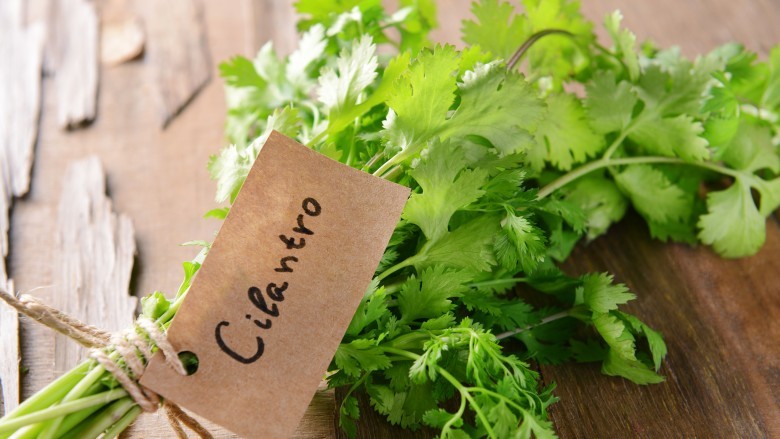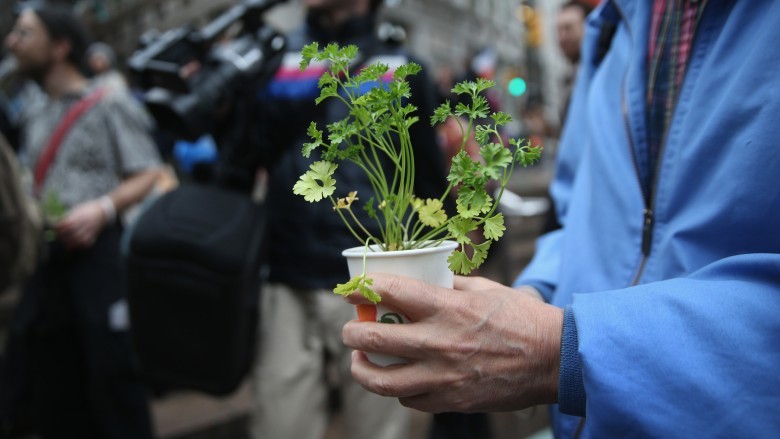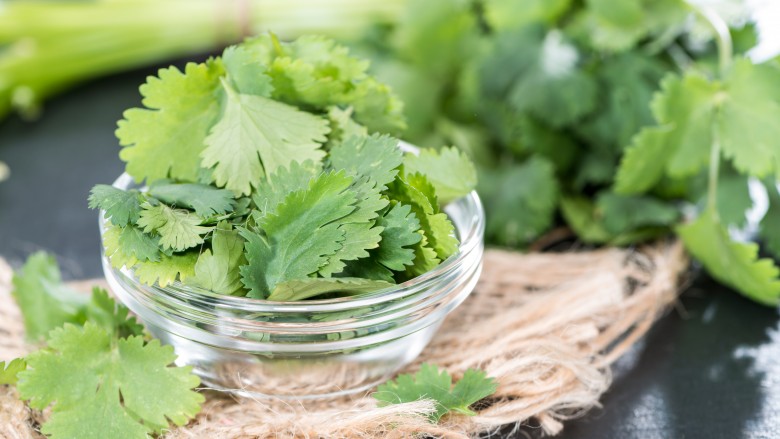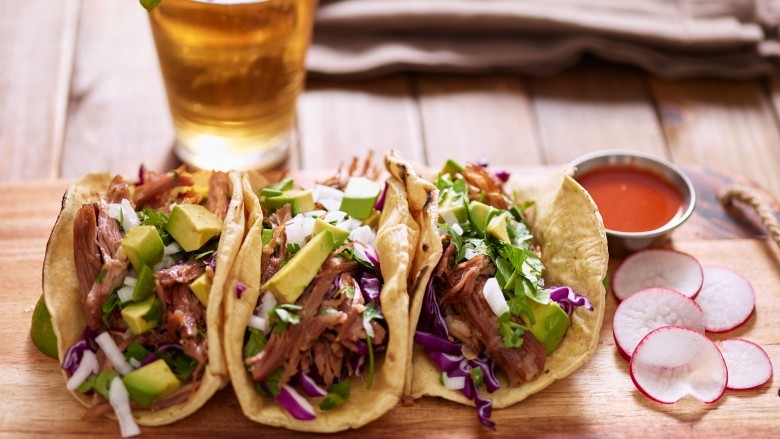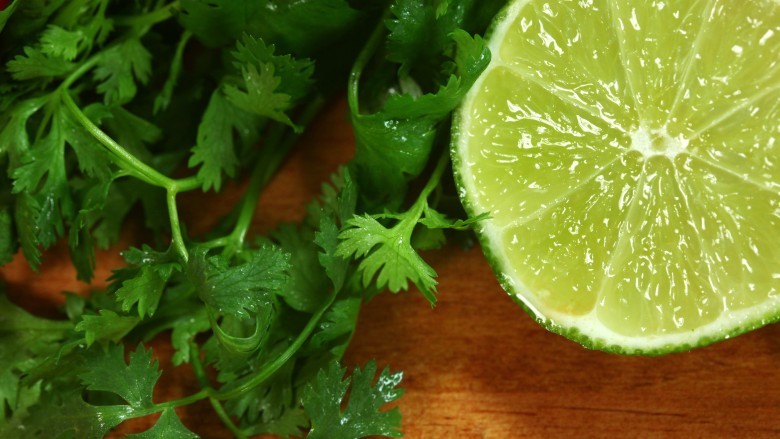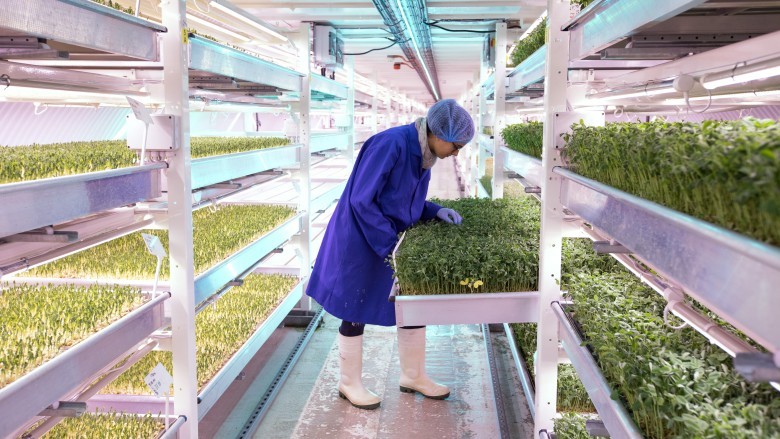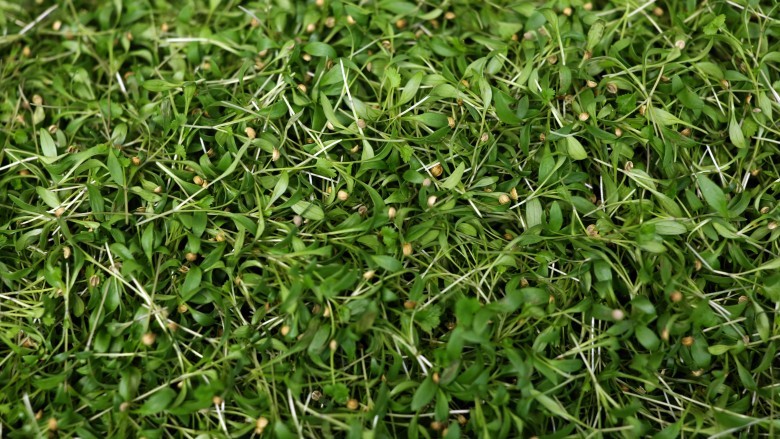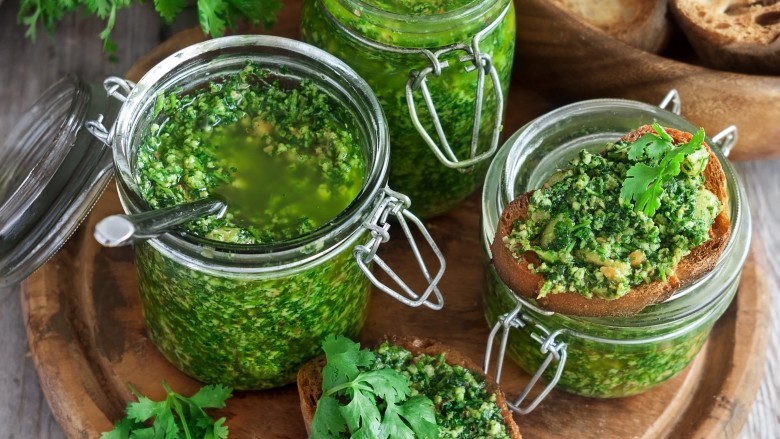The Real Reason So Many People Hate Cilantro
There are probably a lot of foods that you could take or leave, and there are probably plenty of foods that you'll eat even though you're not particularly fond of them. But cilantro is a different story. Those who hate cilantro really hate it. There are even Facebook pages and websites dedicated to hating cilantro. Some people even write haikus to tell the world just how much they hate this particular herb, while others absolutely love it.
Figuring out just what's going on here has taken no small amount of scientific study, and it's complicated.
How many people really hate it?
Estimates vary, but according to a genetic study done by the University of Toronto and published in the journal Flavour, how you feel about cilantro might have something of an ethnic component. They looked at around 1,600 people of all different ethnicities and found that those who traced their families back to East Asia reported the biggest percentage of hate for the herb, with 21 percent reporting that they couldn't stand it. In comparison, those with roots in the Middle East were the biggest lovers of cilantro, with 97 percent reporting that they liked the taste of it. For those who reported their ethnicity as Caucasian, they came in on the end that had a less favorable relationship with cilantro, as 17 percent said they didn't like it.
Others came in somewhere in the middle. The survey found that 14 percent of those with an African background didn't like cilantro, 7 percent of those identifying as from South Asia didn't like it, and only 4 percent of Hispanics said they couldn't stand the herb.
The researchers looked at whether there was a division between men and women's preference for cilantro, but they found no correlation. They also found that many of those surveyed had never tried it and had no feelings one way or the other.
What does it taste like to the other half?
Cilantro is ridiculously polarizing. It seems you either absolutely love it or think it's the most vile taste you can subject yourself to. It's hard to imagine just what the other camp is experiencing when they bite into a dish that's been prepared with it. So what are they really tasting?
The piece in Flavour (from the University of Toronto) described some of the responses they had gotten from those surveyed. Those who liked it reported it had a fragrant, fresh smell, and many said it had an almost citrus-y taste. On the other hand, those who hated it ... really hated it. They likened it to soap, dirt, or bugs, and some said it tasted moldy. While everyone has their own likes and dislikes when it comes to food, cilantro is in a whole different ballpark. So what do scientists think is going on here?
Cultural factors
The University of Toronto study was published in 2011, and researchers suggested that perhaps exposure to the herb had something to do with the apparent ethnic divide they discovered. Exposure to certain flavors shaped what a person liked to eat, the theory went, and the results were certainly in line with it. One of the ethnic groups that reported an almost universal love for the herb was Hispanics, and cilantro is a key ingredient in Hispanic cuisine.
But it's other places, too. As coriander, its seed form, it's a key ingredient in Indian cuisine. It's also in Thai cooking, and it wouldn't be weird to use it in the Middle East to freshen breath. The LA Times reached out to various chefs and found it was a staple in Vietnamese cooking. And in Europe, it's been used to flavor pastries and breads — it's in more places than you might expect. The exposure theory falls apart. So what's really going on?
The cilantro smear campaign
Like many foods, cilantro has a different name depending on where in the world you are. In Europe, it's called coriander, and one food historian has found intriguing evidence that suggests it was actually at the heart of a smear campaign that started as far back as the 16th century.
Helen Leach found a number of examples of herbalists and other "authorities" condemning the herb for its taste. In a 1597 tract, the herbalist John Gerard described it as a "very stinking herbe" and said its leaves were nothing short of "venomous." A Frenchman writing at the same time likened the smell to bedbugs, and Leach argued that could, in part, be because of the name. "Coriander" comes from the Greek "koros," the name of a bug. Weirdly, she was able to trace a sort of culinary prejudice against those who proclaimed a passion for cilantro, one that went well into the 20th century. Writers pointed to the presence of cilantro in Caribbean, Mexican, and Indian cuisine, suggesting those people were a bit lacking in the "good taste" department.
These different names seem to support the idea that love or hate of cilantro was once a way to take a sort of ethnocentric high ground. It's also called Chinese parsley, Thai parsley, and Afghan parsley, and it was only in the 1980s that it became more commonly known as cilantro. While it's certainly hard to prove just how much of it is true, it's definitely interesting food for thought.
Aldehydes
Another piece of the cilantro puzzle was unlocked in 2012, with another study published in Flavour. For this one, researchers surveyed more than 14,000 Europeans to see whether they liked cilantro. Those who didn't like it were more sensitive to organic compounds called aldehydes, particularly the types found in cilantro that create the distinctive smell.
Now, there are a ton of different aldehydes, and most of them have a pleasant, fresh smell. But not all do. The presence of aldehydes was a huge step in figuring out why it's so polarizing. While the unsaturated aldehydes in cilantro are typically described as having a fresh, citrus smell, there are also some companion aldehydes called (E)-2-alkenals. Those, on the other hand, are often described as having a distinctly "soapy" smell. That's the first part of the "ah-ha!" moment.
It's in our DNA
23andMe is a California-based company that deals in DNA. It analyzes DNA to trace things like ancestry and have also taken a shot at the cilantro problem. They asked 25,000 people what their opinion on the herb was and then compared that to the respondents' DNA to see if they could find anything hard-wired into our genetic code. The results showed that our like or dislike of cilantro might be pre-decided for us ... to a point. Part of cilantro's polarizing effect might come from the presence of an odor-detecting gene that hones in on the soapy smell those aldehydes are giving off. Those with the gene are most sensitive to the soap component of cilantro, while those without it are mostly smelling the fresh, citrus aldehydes.
Another study done by the Monell Chemical Senses Center got similar results from a different method. They surveyed 527 sets of twins on their cilantro preferences, and when they were done, they were able to narrow the cilantro gene down even further. According to those researchers, there are three other genes that impact how we perceive cilantro. One is responsible for the reception of particularly pungent compounds, like those found in foods like wasabi. The other two detect bitterness. They also stress that genes might play a relatively small part in whether we like cilantro, suggesting that haters can train themselves into appreciating the herb.
How to go from a hater to a lover
According to Northwestern University neuroscientist Jay Gottfried, part of the problem for people who hate cilantro (as he once did), is the way the brain is programmed to divide stimuli. If, say, we experience an unfamiliar flavor that doesn't really fit into what we've already experienced, we're more likely to file that into the "unpleasant" category. The information from those genes that detect the bad smells is magnified, and suddenly you hate the stuff.
He was able to retrain his brain to first ignore the overpowering experience and gradually turn it into something he actually liked. It was about giving cilantro a chance and forming new associations with it. Rather than immediately condemning it for its smell, he said that eating it around people who enjoyed it helped form new patterns of association with pleasure rather than disgust.
It's also suggested that adding cilantro in baby steps is the way to go. Crushing the leaves before adding them to a dish changes the chemical makeup, breaking down the aldehydes into substances that aren't as aromatic.
Pesto is one of the ideal places to start if you're trying to broaden your horizons and want to give cilantro a shot. Jeffrey Saad of United Tastes of America suggests this recipe for that purpose, and it's filled with other culinary delights like the crunch of ground pumpkin seeds to start opening the door to a whole new aspect of the culinary world.
